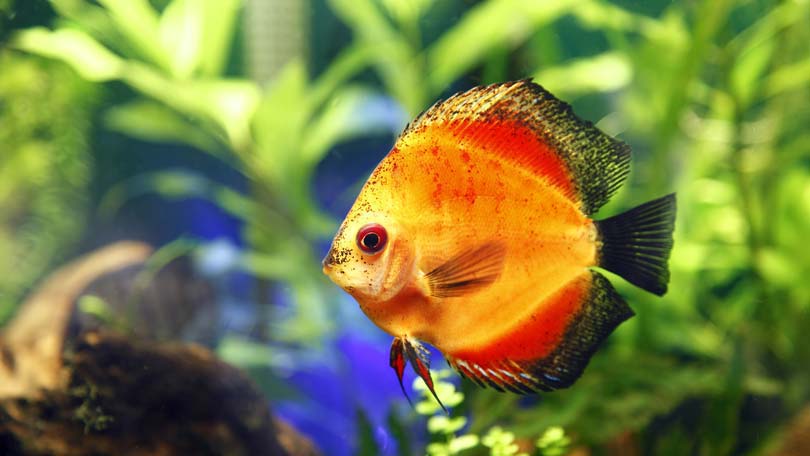Lighting is an important component in your aquarium to ensure your fish remain healthy and happy. Appropriate amounts of lighting provide important advantages to your aquarium, including:
- The reduction of water evaporation
- Assistance in maintaining a consistent water temperature
- Reduction of household pollutants
- Enhancement of fish color and attractiveness of aquarium
- Provision of photosynthesis; necessary for live plants
While it is not necessary to keep the light on for extended periods of time, it is important to understand how much light your fish require.
Basically, there are two different types of lighting available for your aquarium. These are fluorescent tubes and incandescent bulbs. While incandescent bulbs are less expensive than fluorescent tubs; incandescent lights will typically produce more heat and less natural light. As a result, incandescent bulbs are really better suited for small tanks; 10-gallon and under.
If you have a larger tank, fluorescent lighting is really better as it provides more natural light and less heat. In addition, the fixtures for a fluorescent light tube tend to be more flexible and actually make it easier for you to choose the best light for your particular aquarium.
In the event your aquarium has live plants, you should only use a full spectrum fluorescent bulb as this will best simulate the light that is given off by the sun. If you should need more intense lighting, which plants tend to grow best with, you can increase your lighting by using bubs that emit more watts. For example, heavy plant growth can be achieved by increasing your lighting to at least 60 watts of lighting for every 12 inches of the length of your tank. Fluorescent lights are more expensive to purchase; however, it should ultimately be kept in mind that they are less expensive to operate.
When choosing the lighting for you tank, some thought should be given to what is in your tank. For example, reef tanks will require more lighting than a tank that contains only fish. Planted freshwater tanks will likewise require more ample lighting. Live rock tanks, in which photosynthetic animals are cultivated, should be treated as a reef tank and consequently require more lighting. For reef tanks, it is best to consider some type of high intensity aquarium lighting such as compact fluorescent lighting, VHO lighting or metal halide lighting.
Compact fluorescent lighting system-provides a bright, efficient and cool light with a low operating cost while producing less heat than many other intense light sources.
VHO fluorescent lighting systems provide a super bright and long lasting light; making it ideal for reef aquariums.
Metal halide lighting is best known for providing higher heat with a wide spectrum range. It is suited for reefs and freshwater aquariums of depths more than 24 inches. In some cases, a chiller may be needed along with a metal halide lighting system due to the intense heat it puts out if the room temperature cannot be balanced to counteract the heat of the light.
The size and depth of your tank can also play a role in choosing the appropriate amount and type of lighting for your tank. Typically, 1.5 watts of lighting per gallon to 6 watts of lighting per gallon is recommended. If your tank is particularly deep you may need to provide additional lighting, as light does not penetrate water very well. Metal halide lighting is a good option is your tank is over 20 inches in depth as the lamps provide a more concentrate form of lighting.
Fish only aquariums will do fine with a standard fluorescent lighting system; allowing for between 1 to 2 watts per gallon.
A freshwater planted aquarium including live plants and fish will also do fine with a standard fluorescent lighting system, allowing for between 2 and 5 watts of lighting per gallon.
Saltwater reef aquariums with invertebrates, corals and fish will need a lighting system that is more advanced, such as a power compact, VHO or metal halide lighting system. Plan to allow for between 4 to 8 watts per gallon, for aquariums which are 24 inches deep or less. In the event you choose to house only corals or invertebrates which require lower levels of light, you can relax these requirements somewhat.






